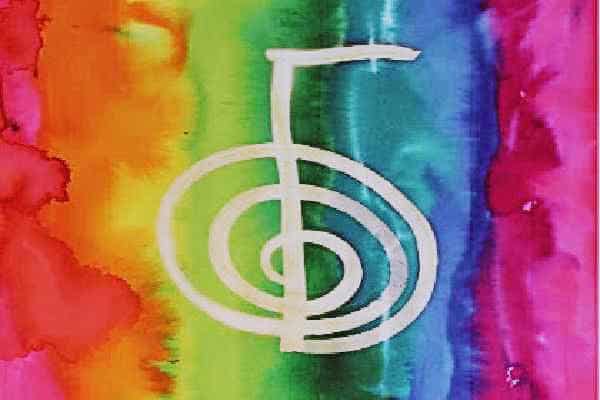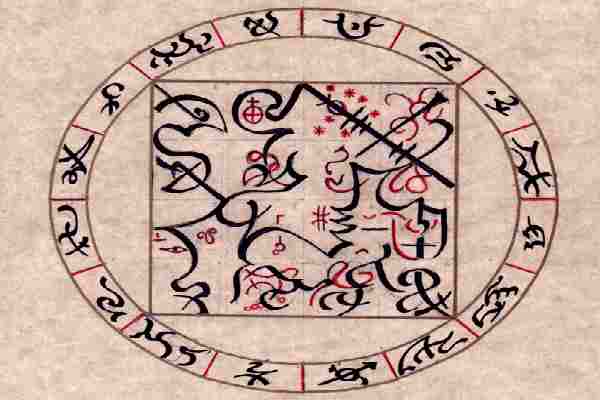More people use sigils for personal growth than you realize. The magic of sigils is everywhere if you look for them. Every corporate icon is a sigil. By understanding ritualistic magic symbols, you unlock the deepest mysteries of the psyche.
Sigil magic rituals are tools of ceremonial magic. These tools are a part of our culture. They blend creativity, calligraphy, symbols, and ritual. Anyone can learn how to use these to enhance their spiritual practice.
Our inclination towards habitual behavior draws many people to rituals. It doesn’t matter what belief system you ascribe. You can be an Atheist, Theist, or Diest and still engage in practices associated with magic. The concept of magic permeates our lives—for instance, a rabbit’s foot on a key chain. If you take the time to study other traditions, you will find several similarities.
Understanding Ritualistic Magic Symbols
Understanding the symbolism behind a ritual or ceremony is crucial. If you do not understand the meaning of the ritual or ceremony, it is hollow and devoid of power. This is because symbols are a conduit between the conscious and unconscious mind.
Symbols in rituals often represent specific concepts, emotions, or spiritual truths. Recognizing these meanings helps us connect with the purpose of the ritual. Symbols help to focus the mind and intention on the goal or purpose of the ceremony or ritual.
The Magic of Sigils
By understanding ritualistic magic symbols, you can give the working direction with your intent. Symbols act as a bridge between physical actions and the spiritual or magical outcomes desired. Understanding the symbolism improves the precision and intention of the rituals. It makes your practice more effective.
The symbols in rituals often have historical and cultural significance. When we engage in the practice, it links us to a broader tradition and community. This connection can provide a sense of continuity and belonging. These positive emotions enrich the experience and deepening our focus. It is one of the main reasons sigils for personal growth are so easy to use and effective.
For example, the Japanese Tea Ceremony is a choreographed ritual. It uses ritual implements, such as teacups, teapots, and tea, to focus on developing concentration and presence. The intention is to develop presence. The ritual implements are ceremonial objects charged with energy.
A Sigil is a symbol. It is a pattern that can represent to the subconscious mind your desired goal. What is its practical, magickal potential? A Sigil can release the long-dormant energies contained within the self. Through working with the Sigil, you can bring to waking manifestation anything in the subconscious. It can animate any archetypal force lying latent within you. ― Laurence Galian, Beyond Duality: The Art of Transcendence
Sigil Magick: Symbolic Rituals and Ceremonies
Magic with a K comes from recent developments in the practice of Witchcraft. It refers to ceremonial and ritualistic magic. Nature-based rituals are often referred to as High Magick.
Archaic symbols such as Runes or objects that project energy are common in the practice of sigil magick. Modern inspiration for using these symbols comes from Aleister Crowle. Mr. Crowle was a famous English writer interested in Western Esoteric practices. His fictional and semi-fictional works spawned a renewed interest in the occult.
Magick is the science and art of causing change to occur in conformity with the Will. ― Aleister Crowley, The Book of Thoth
Let’s break down the terms to make them easier to understand. Sigils are a form of ceremonial or ritualistic magic. These symbols incorporate graphic designs, runes, and symbols in magical workings. It is a device to direct your intent. There isn’t a single unified system for these scripts. They often use symbols that come from other systems.
Sigils and Runes
For example, many sigils use runes. Runes are a form of Proto-Germanic letters for the alphabet. Germanic languages contain variations of these symbols. They were common before the adoption of the Latin alphabet. Runes also use symbols from other languages, including Hebrew, Japanese, and Chinese colonography.
You are more familiar with these symbols than you think. Apart from magic, we find these types of characters in the business world as corporate logos. These symbols represent company values and goals. You’ll never look at the Apple logo picture similarly because of its association with the company by the same name. The transition from a corporate logo to a symbol of magic depends on the user.
Sigil Magic Rituals as a Focal Point

Japanese calligraphy is an artistic writing form using simplified Chinese characters. These symbols form a phonetic script. 六书 (liù shū) is the name for Chinese characters. They are divided into three major categories: pictographs, ideographs, and determinative phonetics. Therefore, it is common for people to use similar pictographs in the design of sigils.
Think of the Sigil as a focal point for directing intention and energy. Using a symbol for producing energy is also a common technique. Take the healing system Reiki, for instance. Practitioners of Reiki use focus and intent to unlock the magic of sigils.
Cho Ko Rei, the symbol above, is the first symbol most people learn. It is a symbol used in gathering and directing healing energy. The Training and initiation into the Reiki healing system include ceremonies of cleansing.
The process of Reiki uses a series of unique pictograms to focus energy on healing. These designs are not part of the formal Japanese writing scripts, but they use the same general form as the Japanese Kana.
The Magic of Sigils for Personal Growth in Different Cultures
Sigils are used extensively in religions and spiritual practices. They are often used as tools for manifestation, protection, or invoking specific energies. Here are some notable examples outside of Western theology.
Eastern and Pagan Systems
1. Witchcraft. In modern witchcraft, sigils are commonly used to represent specific intentions or desires. Practitioners create and charge sigils to manifest their goals.
The practice of witchcraft has ties to older traditions that pre-date written history. Witches have much in common with the methods of our own ancient cultures. Witchcraft mirrors many of the techniques from ancient shamanic cultures. Witches individualize their Craftwork much like the ancient traditions of the Crone.
Sigils are the means of guiding and uniting the partially free belief with an organic desire, its carriage, and retention till its purpose served in the sub-conscious self and its means of reincarnation in the Ego. All thought can be expressed by the form in true relation.
Sigils are monograms of thought, for the government of energy (all heraldry, crests, monograms, are Sigils and the Karmas they govern), relating to karma; a mathematical means of symbolizing desire and giving it form that has the virtue of preventing any thought and association on that particular desire (at the magical time), escaping the detection of the Ego so that it does not restrain or attach such desire to its own transitory images, memories, and worries, but allows it free passage to the sub-consciousness. ― Austin Osman, Spare, The Book of Pleasure (Self-Love): The Psychology of Ecstasy
2. Chaos Magic. This contemporary magical practice heavily relies on sigils. Chaos magicians create personalized symbols to focus their will and achieve desired outcomes.
A big practice in chaos magic is the use of Sigils, which are abstract words or symbols you create and embed with your wishes. ― Sophia Amoruso
3. Ceremonial Magic. Traditions like the Hermetic Order of the Golden Dawn and Thelema use the magic of sigils for personal growth in their rituals. These symbols often represent complex spiritual concepts. Sometimes they are used to invoke deities or spiritual forces.
4. Paganism. Various pagan traditions, including Wicca, incorporate sigils into their practices. Sigils are used in spells, rituals, and as protective symbols.
5. Hermeticism. This tradition includes elements of alchemy and astrology. It uses sigils as part of its symbolic language. Some people believe that sigil magic rituals are part of the lost knowledge of Hermetics. Some believe this is the source of real alchemy and magic, and they may have a point. There are connections to the use of magical energy here. Perhaps Reiki is one proof of the existence of this sacred knowledge.
6. Kabbalah. In Jewish mysticism, sigils are used in writing and in sacred names and symbols. They use these tools to connect with divine energies and facilitate spiritual growth.
7. Taoism. Some Taoist practices involve the use of sigils, often in the form of talismans, to invoke protective spirits or energies.
8. Buddhism. Tibetan Buddhism uses intricate mandalas, which are sigil magic rituals. These tools represent the cosmos and facilitate meditation and spiritual transformation.
Western Systems
The most famous Sigil is the Seal of Solomon, also commonly called a Jewish star, which is a hexagram, two interlocking triangles, representing the perfect union of the male and female principles. ― Judika Illes, Encyclopedia of Spirits
These graphic symbols are prominent in ancient and contemporary pagan art. They are seen in everything from Celtic designs to Wiccan inscriptions. Word-of-faith and the law of attraction practitioners use them as well. Seasoned magical practitioners caution against performing curses. This is because the law of karma will bring back anything evil tenfold.
Create Your Own Sigils
Anyone can create a Sigil. Many people make symbols when practicing automatic writing techniques. The subconscious mind communicates through symbolic rituals and ceremonies.
It’s best to start with the goal in mind. Ritualistic magic uses processes or formulas to produce outcomes. Using the circle in a seating arrangement is one that transcends many traditions. You can create a sigil in a circle with other practitioners to magnify the working energy. Many traditions perform ceremonies to celebrate the seasons. The cycles and constellations of the stars, sun, and the moon. These celebrations are prominent in the rituals of Catholicism and Free Masonry. Whether they admit it, they are practicing ritualistic magic.
You can follow the process for automatic writing and set your intention to create a pattern that points toward any desired goal. The only rule is, if it resonates, seems right, feels right, then it’s right for you.
Some people like to use a Sigil when they practice affirmations, and you can create a Sigil that reminds you of any affirmation routine. These can help reprogram your self-talk.
Just remember, ceremonial magic is powerful. Ensure your goal is positive and does not cause harm to anyone or anything.
In Conclusion
Start small and build your own library of symbols and glyphs. Don’t be afraid to revise and update. Make your sigils living representations of the energy you wish to convey. Adding Sigil magic to your practice individualizes and energizes your magical workings.
References
(1) Symbolism of the cross by Guénon, René, 1886-1951. goodreads.com
(2) Buckland’s Complete Book of Witchcraft. Wikipedia.
